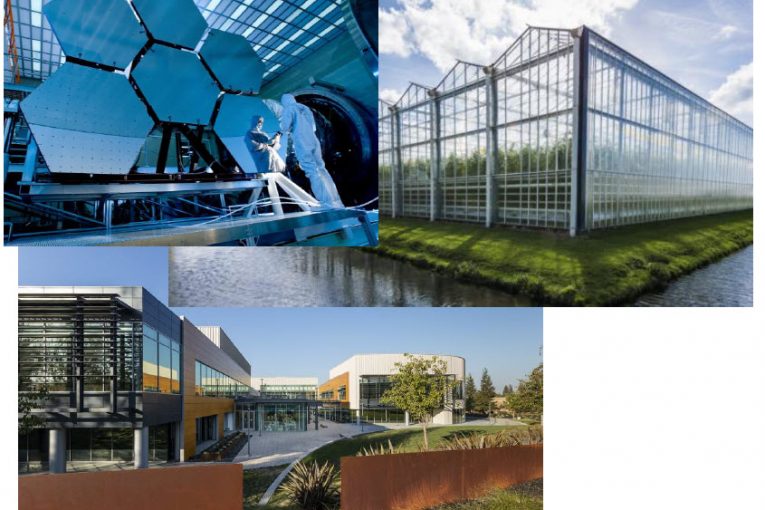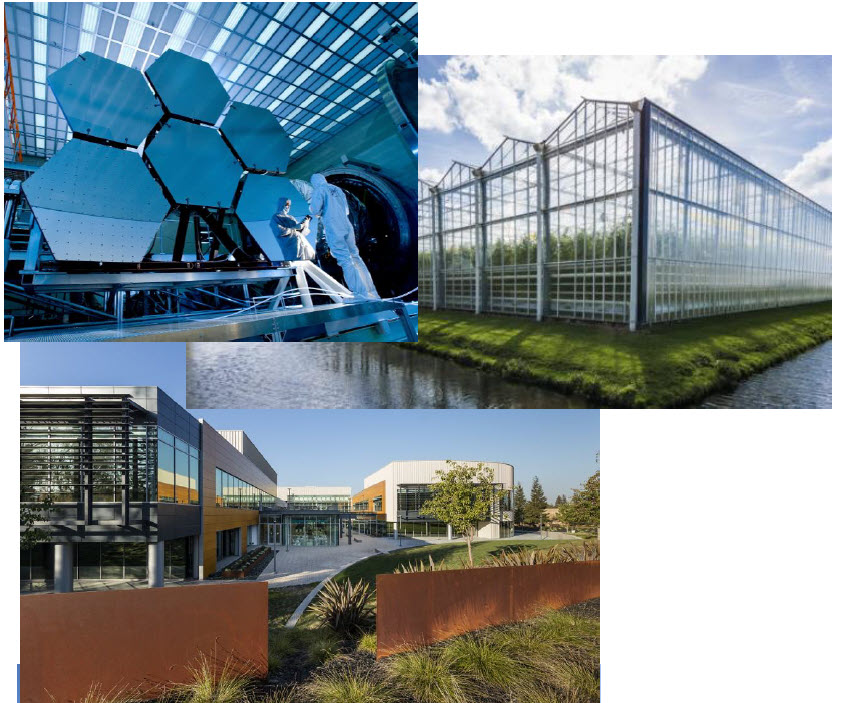

By David M. Greenwald
The pandemic represents a potentially massive disruptive event. At least in the short-term it is leading to companies shrinking their footprint and office space. This was exemplified with a couple of articles this week in the San Francisco Chronicle.
The Chronicle reported on Wednesday, “Yelp is the latest tech company moving to downsize its headquarters in San Francisco, as the coronavirus pandemic and shift to remote work reshapes the local economy. Most of the business-reviews company’s 161,876-square-foot lease at 140 New Montgomery St. expires in October, and the entire space has been listed as available.”
What Yelp said makes some sense: “Once it’s safe to return to our offices, we plan to continue to operate with a significant portion of our team working remotely on a full-time basis, or for part of the week.”
Last fall, NPR was reporting on “Zoom towns” like Truckee—outdoors paradise, and a median home price that is half of that of San Francisco.
NPR reported, “Like a lot of other vacation destinations — the Hamptons, Cape Cod, Aspen and so on — the Truckee housing market is booming during the coronavirus pandemic. It’s up over 23% since last year, according to data from Redfin, a real estate brokerage. Truckee is part of a trend that realtors and journalists are calling ‘Zoom towns,’ places that are booming as remote work takes off.”
There are advantages to this new approach. It does rely on reliable internet connectivity, but you no longer need to purchase your housing near your job, commute time is cut, GHG emissions are reduced, and as long as companies can maintain productivity and networking, it seems like at least a partial solution to housing crunches in the Bay Area and the Silicon Valley—and perhaps a  solution to traffic, infrastructure and of course climate change.
solution to traffic, infrastructure and of course climate change.
There is a flip side to this—offices can be remote, labs, not so much.
The Vanguard reported yesterday that Raley’s will be sponsoring the Raley’s Food Lab at the AgStart incubator in Woodland. As announced last fall, AgStart provides desperately needed wet lab space to the region. Former Vanguard Board Member Leanna Sweha, now program director for AgStart, told the Vanguard last fall that “lab space is virtually non-existent and very expensive.”
You can’t Zoom in for lab space, and thus, one of the problems for the region in terms of attracting and helping startup companies in the technology space grow is the lack of wet labs.
The Business Journal in 2019, for instance, noted that the lack of wet lab space is impacting UC Davis as well, where professors cannot get the space that they need, forcing the university to lease space off campus. But that space is scarce and expensive.
Yesterday, Mark Anerson of the Sacramento Business Journal reported that tech companies very quickly filled two vacant R&D labs.
The Business Journal reported that a space of about 20,000 square feet of office and lab in Davis became available when the lab was not going to be maintained. In a blink of an eye, the R&D lab of the Agrinos Group was filled.
As the Business Journal reported, “That put a fully provisioned and furnished lab and office space on the market in Davis, which is notoriously short of such space… It didn’t last long.”
“There continues to be very little of this space available,” Jim Gray told the publication. In fact, he told them that it took exactly one phone call to fill the Agrinos space—BioConsortia, Inc., a local Davis-based ag tech company, is outgrowing its 5700 square foot lab across town.
With them moving into the larger Agrinos space, that left the BioConsortia on the market for a another minute. Once again, the Journal reports, “It didn’t last long, either. Another single phone call, Gray said, and that lab space was leased to a startup company working in agricultural technology. He declined to disclose the startup’s name.
“It tells you the demand,” Gray said. “There just isn’t anything available.”
This is the point that was made last fall during the debate over DISC. But it is also the point Jim Gray client Mark Friedman made to the Planning Commission and the council about the need for tech space in Davis.
Friedman last October told the council that University Research Park was 98 percent leased commercially.
He was asked whether companies would be demanding this space.
Mark Friedman responded, “It’s actually interesting, at the moment I’m more concerned about the apartments than the lab and the research space.”
He noted that, with the kind of tenants they have, “it’s very essential for people to come in and make sure their experiments are working. That’s not something that you can do from home.
“The velocity of interest in Davis as a place to locate and grow is real and accelerating. We believe that University Research Park with additional new investment and focus which Fulcrum is offering will make that an even better reality,” local brokers have told the Vanguard.
Some have shrugged at comments like these, believing them self-serving, but the speed at which these spaces were filled should give people pause here.
As if to punctuate that, a month ago the Vaca Valley Business Park did a presentation about their site, 30 miles from Sacramento, 50 miles from San Francisco, 20 minutes from UC Davis.
They are looking at Biotech, Life Science, Ag-Tech and incubator space.
It is a lesson for us all—office space may be downsizing and perhaps going the way of the dinosaur, but you can’t Zoom into lab space and conduct experiments. We still need physical locations for wet labs and other uses, and places like Davis remain in high demand. We really don’t know just how high that demand is until the space becomes available.
Jim Thompson, the former CHO at the Davis Agrinos headquarters, told the Business Journal that the quick turn in transferring the Agrinos lease and then backfilling BioConsortia’s lab space “shows you there is nothing available in Davis.”
Indeed, “The Sacramento region, and specifically Davis, has had a shortage of so-called wet lab space for years.”
Or as John Selep, president of the AgTech Innovation Alliance, which is the nonprofit sponsor of AgStart, put it, “The lack of available lab space is an opportunity cost for the region.”
—David M. Greenwald reporting
Support our work – to become a sustaining at $5 – $10- $25 per month hit the link:


You’re still at it, regarding this?
And yet yesterday, you had an article regarding some kind of subsidized “food lab” in Woodland. (I assume that this is part of the same site which houses a subsidized business that one of your board members is involved with.)
For what it’s worth, the (other) “technology center” site in Woodland (the one that failed in Davis, before it even reached voters) still doesn’t have any announced commercial tenants that I’m aware of.
It does, however, have 1,600 proposed housing units (which were apparently “added” to the proposal, after the move from Davis).
The food lab was a press release out of Woodland, this is lab space in Davis as reported by the Sacramento Business Journal. Related somewhat, but different stories altogether.
(Former) board member, as I now see in your article.
In any case, maybe pass the word on (to all those claiming a “shortage” of space) that there’s a couple of Zoom meetings coming up (on 2/9, and 2/11) regarding the massive technology center site in Woodland. With nary a single announced commercial tenant that I’m aware of, so far.
Here’s the link, which contains the information regarding the Zoom meetings:
https://www.cityofwoodland.org/584/Community-Outreach-Public-Hearing-Inform
(No – I’m not a fan of this one, either. But no doubt, this one will be built.)
New math:
doubt = j + r + d
I wish that they had that in every city – including Woodland.
But, those folks would likely approve it regardless. (Different mentality, and not a college town.)
If they had ‘that’ in *every* city, there would be a lot more actual (not just ‘so-called’) homeless people.
I don’t think so, as many cities are more welcoming of growth and sprawl. (See “Austin”.)
For that matter, see “Woodland”, or any of the other regional cities.
Frankly, it’s only the nicer places that have any concern regarding sprawl, whatsoever. It’s as if residents in those places don’t understand why they’re sitting in traffic for hours at a time (as just one impact).
Sometimes, these are the same people who think that an Amazon fulfillment center is “just dandy”, regarding the type of employment that they provide.
And yet, sprawl doesn’t even necessarily lower home prices, or prevent “homelessness” (see San Jose, Los Angeles).
At some point that will be space that companies can use – right now it’s not. But that does bring up the second point – if companies are going to Woodland or Vacaville, that means they aren’t coming to Davis, aren’t generating jobs, aren‘t bringing in tax revenue. It will solve the regional shortfall at some point but not Davis’ issues.
It’s certainly a lot farther along in the process than any (non-existent) Davis proposal. Don’t forget that this particular proposal STARTED in Davis, but failed before it was even presented to voters. (Replaced by WDAAC, at that site.)
It will likely have at least some benefit to Davis itself. And, without the cost and impact of providing housing, in Davis.
But, you’re bringing up a different issue, than the claimed “shortage of space” in your article.
A fiscal analysis was already done, for DISC. (Three of the city’s finance and budget commission members did not agree that it would create “any” fiscal profit for Davis whatsoever.)
We’ve already beat that subject to death, and the voters made their decision.
So the argument not to develop in Davis is that it’s hard to develop in Davis – there is some weird circular logic there.
I’m not seeing that anywhere in my comments.
Regardless, I would think that the proposal in Woodland is going to address the so-called “local demand” (beyond infill itself) for this type of thing, over the next few decades at least.
It will also create its own demand for housing, partially addressed by the inclusion of 1,600 housing units onsite.